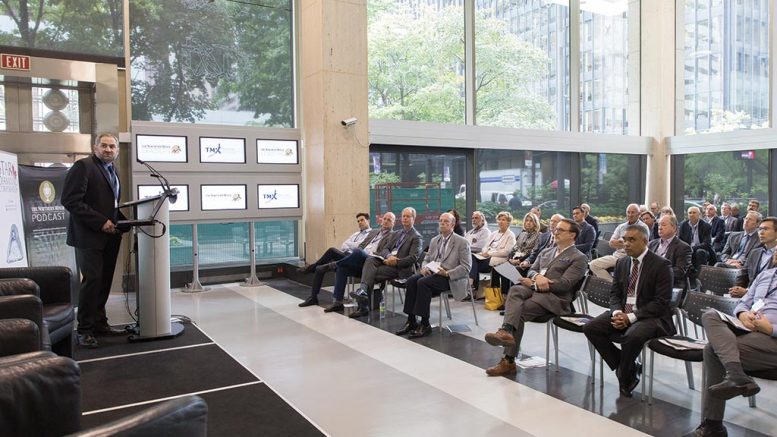The second annual Diamonds in Canada Symposium, organized by The Northern Miner, took place in Toronto in June. This year’s featured speakers included Chris Jennings, chairman of North Arrow Minerals, and Paul Zimnisky, independent diamond analyst and consultant. While the day was full of insights about the diamond market and diamond exploration and mining, three themes were particularly prominent.
1 It’s bad out there
In a presentation on the state of the diamond market and diamond equities, Paul Zimnisky documented a devastating slide in market cap of listed companies. A basket of seven diamond producers (Alrosa plus six smaller producers) lost 50% of their combined market cap between January 2017 and June 2019 – 17% in 2017, 29% in 2018 and 16% in the first half of 2019.
A big part of the industry’s woes right now is the oversupply in smaller diamonds. However, global supply of diamonds is estimated to fall from 152 million carats in 2017 – when many new sources of diamonds came online – to 134 million by 2022.
Demand will depend on many factors, top among them global GDP growth and consumer sentiment.
2 New uses for existing technology
At Star Diamond’s (TSX: DIAM) Star project in Saskatchewan, Rio Tinto (NYSE: RIO; LSE: RIO) is employing new technology – a Bauer trench cutter that has been used extensively in civil engineering applications, but never before to extract a diamond bulk sample.
It’s also the first time the machine has been used to dig down to 250 metres depth; previously, it’s only been used to 150 metres. The machines were used to excavate 3.2-metre by 1.5-metre rectangular holes at the project, where Rio Tinto has an option to earn up to 60%.
“From each 10 metres of sample, we’re going to get 100 tonnes of kimberlite, which is a very significant increase from the 30-tonne samples that we got from the previous 48-inch drill program,” said Mark Shimell, project manager for Star Diamond.
At the time of the symposium, the first hole had been completed. At press time in October, the trench cutter rig had successfully completed all 10 planned holes.
The company is also incorporating XRT technology into the bulk sample processing plant it’s building onsite in order to recover large stones.
Separately, keynote speaker Chris Jennings said that North Arrow Minerals (TSXV: NAR) also plans to incorporate XRT technology in a smaller, mobile bulk sample processing plant it’s considering building at its Naujaat project in Nunavut.
“Thousands of diamonds have probably been crushed in processing plants,” he said, adding that it was “miraculous” that a 552-carat diamond found at the Diavik mine last October survived the crusher.
3 Lab-created diamonds don’t have to be a threat
A panel discussion on man-made diamonds at the end of the day attempted to sort fact from fiction in assessing the threat they pose to the industry.
“I was actually at a diamond conference in South Africa when De Beers announced Lightbox,” said Pangolin Diamonds’ (TSXV: PAN) president and CEO Leon Daniels, referring to De Beers’ initiative to sell jewelry made with its own lab-created diamonds. “Most of the delegates gasped in horror, but I thought it was a very smart move by De Beers.”
“As long as we can distinguish between natural and man-made diamonds, I think the natural industry’s going to be okay,” Zimnisky said. “It has a very resilient track record, and I wouldn’t bet against De Beers longer term. But I think the industry has to continue to take this very seriously – and I think it will lose market share in the lower priced diamond categories.”
Zimnisky added the industry should focus on protecting its bread and butter – the bridal market.
Jennings pointed to the advantage of natural diamonds as a store of value. “In 1960, a 1-carat flawless diamond cost $3,000. Today it’s about $30,000,” he said.
Indeed, the prices of lab-created diamonds have declined rapidly relative to mined diamonds with advances in technology.
At the same time, Zimnisky pointed to one big advantage the emerging industry has: “It tends to be younger, entrepreneurial types that tend to have tech backgrounds, so they’re just kicking the natural diamond industry’s ass when it comes to social media and any kind of digital campaigning,” he said, “And that’s concerning.”
– This article originally appeared in the November 2019 issue of Diamonds in Canada.





Be the first to comment on "Diamonds Symposium explores industry challenges and solutions"